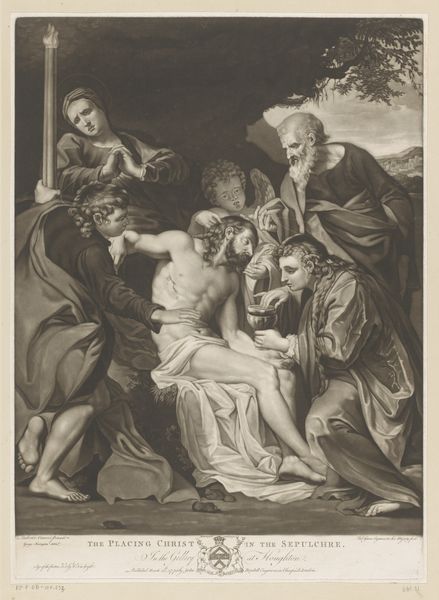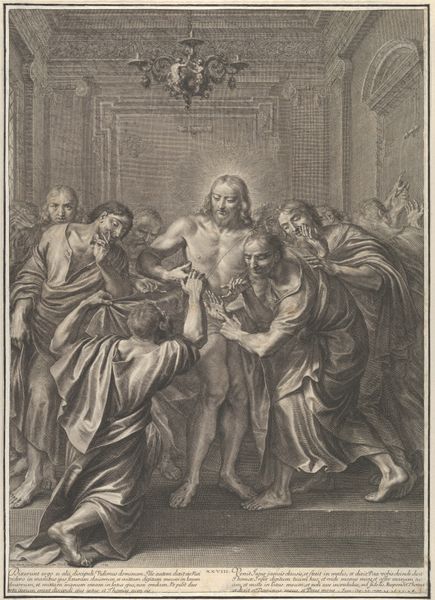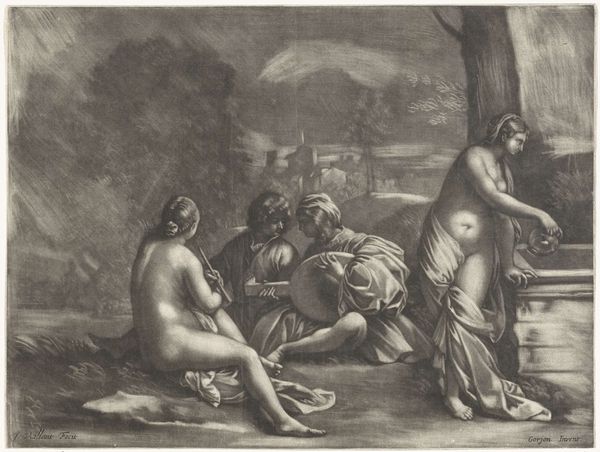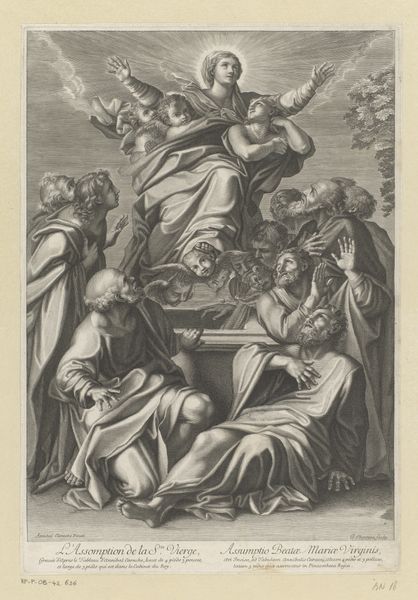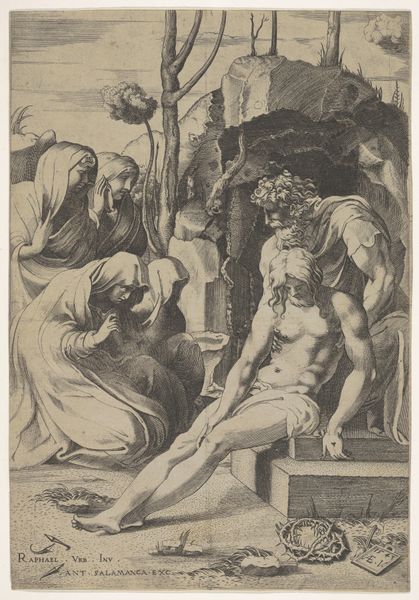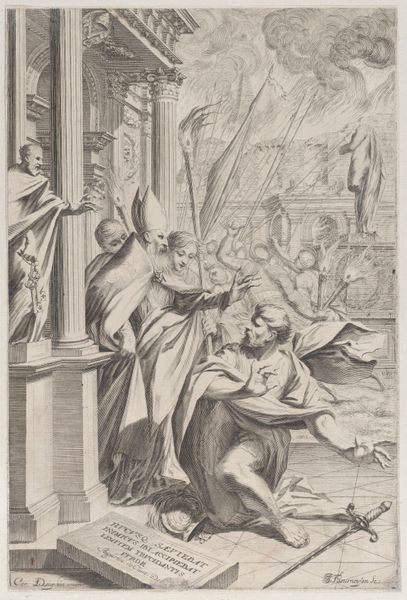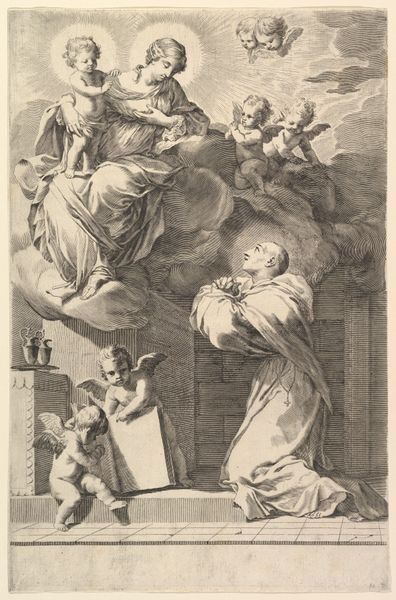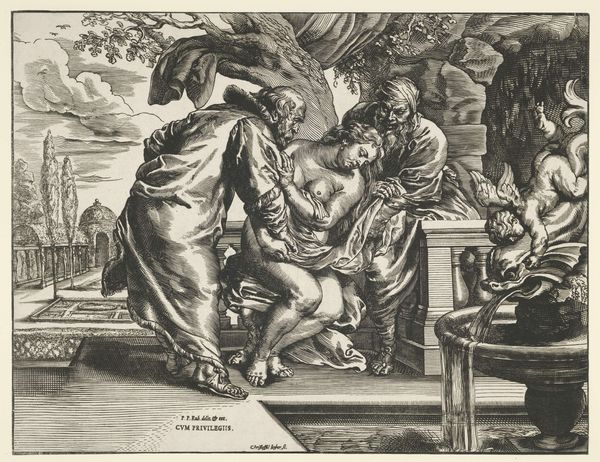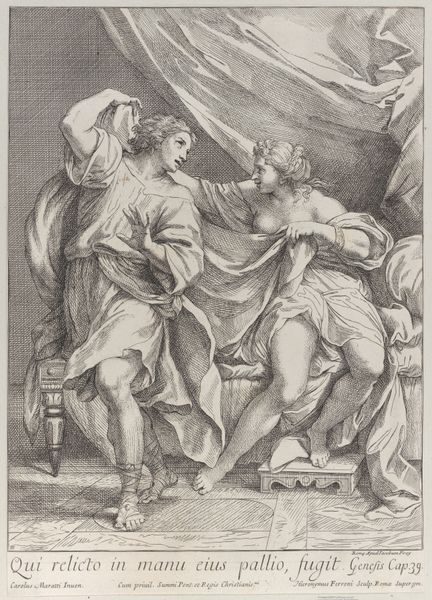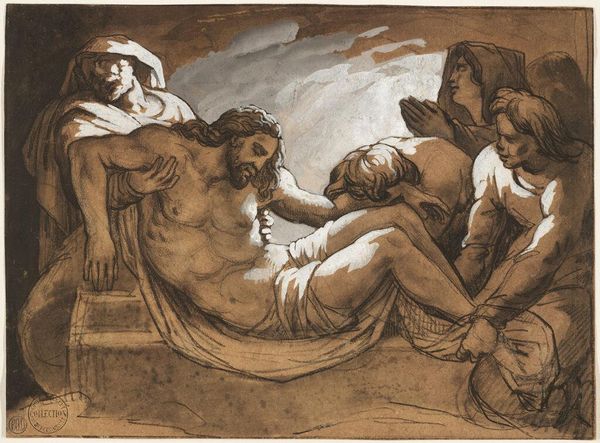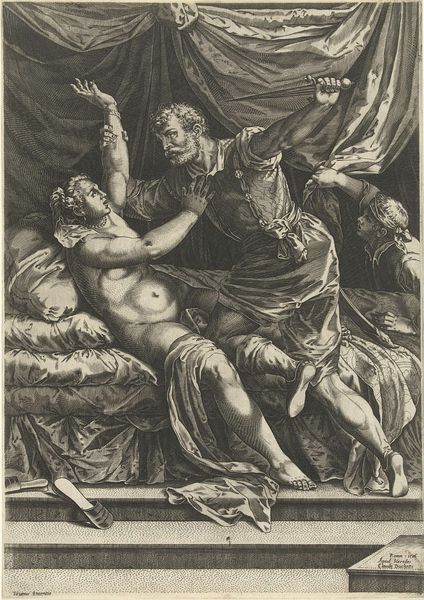
painting, oil-paint
#
allegory
#
narrative-art
#
baroque
#
painting
#
oil-paint
#
oil painting
#
underpainting
#
soldier
#
men
#
portrait drawing
#
history-painting
#
academic-art
Dimensions: 70 × 51 3/4 in. (177.8 × 131.4 cm)
Copyright: Public Domain
Curator: Look at the tension rippling across this canvas! "The Sacrifice of Polyxena," painted in 1647 by Charles Le Brun. I’m immediately struck by the sheer drama. Editor: It does have an operatic quality, doesn't it? There’s something undeniably unsettling about the color palette though – that icy blue of Polyxena’s drape contrasting with the warm, almost brutal earth tones surrounding her. Curator: The composition speaks volumes about sacrifice as both a ritual and a symbol. Notice the arrangement: Polyxena, nearly nude, is being presented at the tomb of Achilles. Consider the jug near her; it reinforces this notion of libation and offering. There is cultural continuity here reaching into pre-history. Editor: Continuity yes, but consider that Polyxena’s body is quite literally being offered as recompense, as a prize to satiate the ghost of a male warrior. The act itself is undeniably violent and speaks to historical subjugation of women under the pretense of “honor.” How does this relate to ideas of nationhood and sacrifice throughout Western history? Curator: Think of how this scene taps into our understanding of classical history and mythology. Le Brun uses gestures, costume, and light to highlight not just a single story but a broader message: the idea that even in beauty and innocence, there is tragic sacrifice to appease greater powers, often those tied to ancestral duty. The wreaths are important as visual language, invoking classical precedent and continuity of this kind of tribute. Editor: But what if we viewed "ancestral duty" here not as a sacred inevitability, but as an engine of patriarchal violence? Le Brun paints her as partially nude to amplify a certain visual appeal in her defeat. Her death ensures the legacy of these men – Achilles, Pyrrhus – it makes me profoundly uneasy that we are meant to admire that. Curator: We can’t deny the visceral response this artwork evokes. The figures' expressions carry weight, speaking to a universal language of fear and duty. Regardless of gender. Editor: Maybe instead we might ask: Who benefits when women are taught to embrace the mantle of sacrifice? Is this an image that merely retells a legend, or does it serve as a warning about power and the female body within political and social dynamics? This really puts it in perspective. Curator: I suppose both are at play here, depending on how one sees the undercurrent of visual symbols present.
Comments
No comments
Be the first to comment and join the conversation on the ultimate creative platform.

